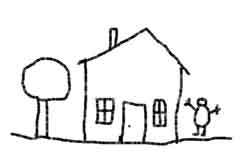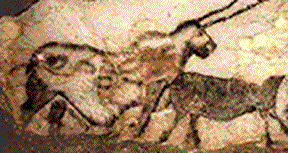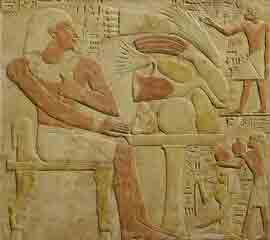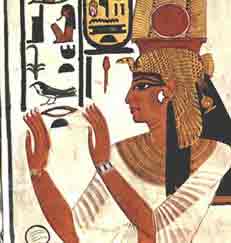Silhouettes and shapes
are essential elements in painting
"Paint shapes, not objects," is something I've heard again and again since trying to become a serious artist. It took a while for it to sink in, but I finally understand the concept:
- Don't paint a tree; paint the shape of the tree.
- Don't paint a figure; paint a shape that represents a figure.
- Combine shapes to make more complex (and interesting) shapes.
- If a shape is bland, change it to make it exciting.
- Try to make one shape interlock with another shape.
- Consider the shape of negative space (all the stuff that's not your subject).
- Combine realistic shapes into abstract shapes.
Any one of these ideas is challenging, and enough to keep you engaged for a long while. To keep it simple, let's look at the concept of shapes as they apply to real things--shapes that look like the objects they represent.
It's child's play

Children learn to draw with outlines. A tree, a house, or a person is usually represented by outlines. Youngsters use views that best represent the real object. A side view of the house would be just a rectangle--not as interesting and not as clear.
"Those who cannot learn from history
are doomed to repeat it." *
Humans have always used outlines and silhouettes to represent real things. In Lascaux, France, cave dwellers drew on stone walls to show some of their day-to-day activities.

Not a lot of detail here, but interesting shapes nonetheless--and a lovely piece of art. These two animals represent two types of shapes--outline and silhouette. I would argue that this image is more interesting than a photograph or realistic painting of the animals.
The Egyptians understood art better than children, but they used the same principles. They showed views that clearly represent the real objects. They understood the importance of shape as a defining characteristic. Study these pictures.


Each major body part is shown so that its defining shape is visible: head in profile (but the eye as a front view), torso facing us, legs and feet in profile. It's odd looking, but purposeful. The purpose is to define the shape that identifies the subject.
We should think about the shape that defines the subject. That's what you should draw or paint! But you don't need to be as extreme as the Egyptians.
Music for walking (like an Egyptian)
All this talk about shapes and profiles can be confusing, so please take a break by watching a classic video of the Bangles singing (and walking) like Egyptians. Please pay attention to Susanna Hoffs as she demonstrates her big "Egyptian" eyes near the end of the song. Be sure your computer's sound is turned up loud.
End of part 1.
*quote from George Santayana
Copyright James H. Stephens
All rights reserved
More art books and other things from Amazon. Just click this link:

